Eastern Dogs
Welcome to Eastern Dogs! We are Gyuri Park and Thomas Walsh, passionate dog parents to several dogs from South Korea. Our furry companion, Doogi, has been the inspiration behind our journey to learn and share the fascinating world of South Korean dogs.
South Korea is a country with a rich history and deep cultural roots, and its dogs reflect this heritage. From the majestic Jindo to the adorable Pungsan, South Korean dog breeds hold a special place in the hearts of dog lovers around the world. These dogs embody the resilience, loyalty, and beauty that is characteristic of their homeland.
Our love for South Korean dogs started when we first laid eyes on Doogi, our faithful and loving companion. Doogi, a Jindo mix, stole our hearts with his intelligence, grace, and unwavering loyalty. Through him, we discovered the unique traits and captivating personalities that make South Korean dogs truly exceptional.
At Eastern Dogs, our mission is to celebrate and promote awareness of South Korean dog breeds. We believe that each breed has a story to tell and deserves recognition for their distinct qualities. Whether it’s the spirited and courageous Jindo, the gentle and affectionate Sapsaree, or the playful and mischievous Poongsan, we aim to highlight the charm and characteristics that make these dogs truly remarkable. Through our website, we strive to provide valuable information and resources for dog enthusiasts and potential dog owners. We offer in-depth breed profiles, training tips, health advice, and insights into the unique aspects of South Korean dog ownership. Our goal is to empower individuals to make informed decisions and provide the best care possible for their beloved South Korean companions.
- Jindos’ Social Behavior Towards Familiar and Unfamiliar Dogs
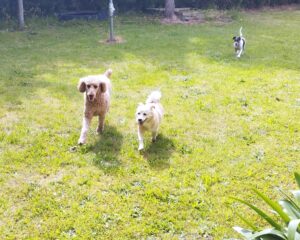 Jindo’s often display a strong sense of pack loyalty. They typically get along well with dogs they are familiar with and consider part of their pack. However, they can be standoffish and territorial towards unfamiliar dogs, particularly those of the same sex. This behavior stems from their instincts as hunters and guardians. Personalities and Temperaments:…
Jindo’s often display a strong sense of pack loyalty. They typically get along well with dogs they are familiar with and consider part of their pack. However, they can be standoffish and territorial towards unfamiliar dogs, particularly those of the same sex. This behavior stems from their instincts as hunters and guardians. Personalities and Temperaments:… - Are Jindo’s easy to toilet train?
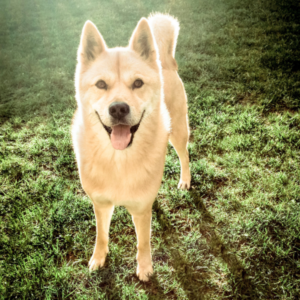 Jindo’s are naturally very clean dogs, which means they prefer to go to the toilet well away from their home. This behavior results in them being very easy to toilet train. Even as puppies they are very reluctant to pee or poo inside and are willing to hold it in for a long time before…
Jindo’s are naturally very clean dogs, which means they prefer to go to the toilet well away from their home. This behavior results in them being very easy to toilet train. Even as puppies they are very reluctant to pee or poo inside and are willing to hold it in for a long time before… - How many Jindo dogs are there?
 How Many Jindo Dogs is there? Just how rare is the breed? Jindo dogs, a breed originating from South Korea, have gained recognition and admiration for their intelligence, loyalty, and striking appearance. However, understanding the population and distribution of these dogs can be quite complex. In this article, we delve into the numbers and distribution…
How Many Jindo Dogs is there? Just how rare is the breed? Jindo dogs, a breed originating from South Korea, have gained recognition and admiration for their intelligence, loyalty, and striking appearance. However, understanding the population and distribution of these dogs can be quite complex. In this article, we delve into the numbers and distribution… - Do Jindos shed a lot of hair?
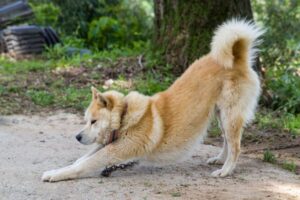 Do Jindogs shed a lot of hair? Jindos shed heavily twice a year, usually in the Spring and Fall. During these periods, your furry friend will lose their entire undercoat, and the shedding can last for over a month. It’s like having your very own furry snowstorm in your home! But fear not, outside of…
Do Jindogs shed a lot of hair? Jindos shed heavily twice a year, usually in the Spring and Fall. During these periods, your furry friend will lose their entire undercoat, and the shedding can last for over a month. It’s like having your very own furry snowstorm in your home! But fear not, outside of… - Are Jindo dogs aggressive?
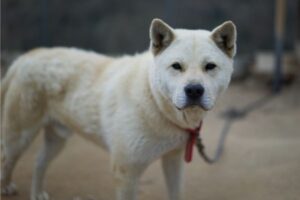 The behavior of certain Jindos has often been characterized as “aggressive.” Jindos are known for their unwavering loyalty, which extends to protecting their homes and families. However, if a Jindo lacks proper socialization and encounters unfamiliar dogs or strangers, it may exhibit aggression. This tendency is particularly prominent among Jindos from South Korea, where many…
The behavior of certain Jindos has often been characterized as “aggressive.” Jindos are known for their unwavering loyalty, which extends to protecting their homes and families. However, if a Jindo lacks proper socialization and encounters unfamiliar dogs or strangers, it may exhibit aggression. This tendency is particularly prominent among Jindos from South Korea, where many… - Can you run with a jindo?
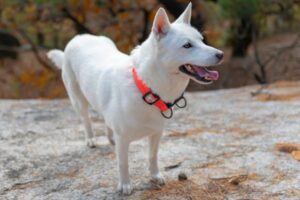 While Jindo dogs do enjoy running and exercise only the most well trained ones make good running dogs. The reason why is that Jindos are easily distracted, they want to smell that tree or chase after that cat. Jindos love to run and exercise, if it was up to them they will spend the best…
While Jindo dogs do enjoy running and exercise only the most well trained ones make good running dogs. The reason why is that Jindos are easily distracted, they want to smell that tree or chase after that cat. Jindos love to run and exercise, if it was up to them they will spend the best… - Do Jindos get along with cats?
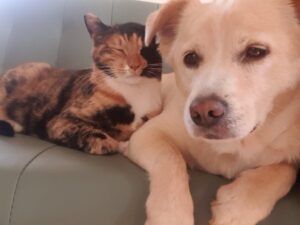 Hey there, potential Jindo Owner! I’m Doogie, a Jindo dog with a tale to tell. Today, I’ll bark about Jindos and how well we get along with cats. You see, like any dog, we can get along with feline friends if we consider them part of the family. If they are not part of the…
Hey there, potential Jindo Owner! I’m Doogie, a Jindo dog with a tale to tell. Today, I’ll bark about Jindos and how well we get along with cats. You see, like any dog, we can get along with feline friends if we consider them part of the family. If they are not part of the… - Tragedy to our lovely buddy Happy – a fate too many Korean dogs share.
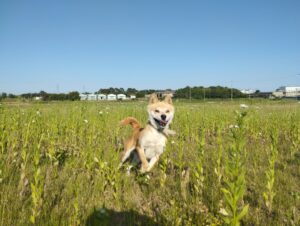 Some tragic and very sad news. This evening my wife and I were out walking our two dogs (Doogie and Lora) when we called in to pick up Happy for her daily walk. Happy is a two year old ginger Korean mix dog. For the last year and a half my wife and I have…
Some tragic and very sad news. This evening my wife and I were out walking our two dogs (Doogie and Lora) when we called in to pick up Happy for her daily walk. Happy is a two year old ginger Korean mix dog. For the last year and a half my wife and I have… - Do Jindo dogs like the water, how about baths?
 Do Jindo’s like water, how about baths? Jindos typically exhibit a wide range of personality traits, although some traits are much more common than others. One of these traits is a dislike of water or getting overly dirty. Most Jindos prefer not to jump into the water or walk through a deep puddle if they…
Do Jindo’s like water, how about baths? Jindos typically exhibit a wide range of personality traits, although some traits are much more common than others. One of these traits is a dislike of water or getting overly dirty. Most Jindos prefer not to jump into the water or walk through a deep puddle if they… - Pungsans – The alpine dog of North Korea.
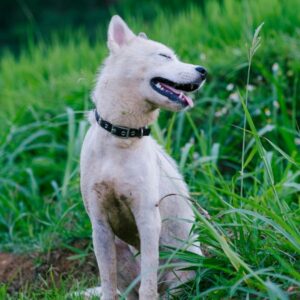 size 50~60cm weight 20∼27kg The color of the body White, Gray, Red, Brown, Black Distribution Area North Korea, South Korea History of Pungsans: The Alpine Dog of North Korea The Pungsan dog, also known as the Pungsan hunting dog, is a breed that originated in the high alpine provinces of North Korea. These regions are…
size 50~60cm weight 20∼27kg The color of the body White, Gray, Red, Brown, Black Distribution Area North Korea, South Korea History of Pungsans: The Alpine Dog of North Korea The Pungsan dog, also known as the Pungsan hunting dog, is a breed that originated in the high alpine provinces of North Korea. These regions are… - Sapsali Dog
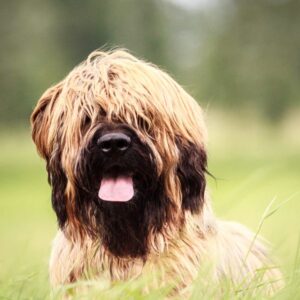 size Males 55-63 cm, females 52-60 cm weight Males 22-30 kg, females 20-28 kg The color of the body Yellow, Black, Blue (Gray), White, Chequered Distribution Area Republic of Korea Sapsali (Sapsaree) dogs originated from the southeast of the Korean peninsula, and the name means to cast out ghosts and ill fortune. The earliest records…
size Males 55-63 cm, females 52-60 cm weight Males 22-30 kg, females 20-28 kg The color of the body Yellow, Black, Blue (Gray), White, Chequered Distribution Area Republic of Korea Sapsali (Sapsaree) dogs originated from the southeast of the Korean peninsula, and the name means to cast out ghosts and ill fortune. The earliest records… - Do Jindo’s bark a lot?
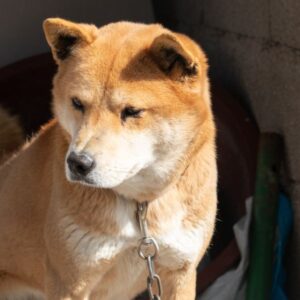 Jindo Dogs: The Barkers and the Quiet Ones When it comes to barking, Jindo dogs are not as vocal as some other breeds. They are generally laid-back and prefer to relax and keep an eye on their territory. In fact, I’ve witnessed them silently chase after prey while hunting. However, it’s important to note that…
Jindo Dogs: The Barkers and the Quiet Ones When it comes to barking, Jindo dogs are not as vocal as some other breeds. They are generally laid-back and prefer to relax and keep an eye on their territory. In fact, I’ve witnessed them silently chase after prey while hunting. However, it’s important to note that… - The Donggyeongi Dog (A Jindo without its tail)
 The Donggyeongi, is a rare dog breed native to Korea. Its most notable feature is its very short tail. The Donggyeongi was designated as a Korean Natural Monument on November 6, 2012. Other Names: Dang dog, Tokyo Lee, dang gangi, dong dong dog Size: Males 47–49 cm, females 44–47 cm Color: Yellow (yellow sphere), white…
The Donggyeongi, is a rare dog breed native to Korea. Its most notable feature is its very short tail. The Donggyeongi was designated as a Korean Natural Monument on November 6, 2012. Other Names: Dang dog, Tokyo Lee, dang gangi, dong dong dog Size: Males 47–49 cm, females 44–47 cm Color: Yellow (yellow sphere), white… - Are Jindos good Apartment dogs?
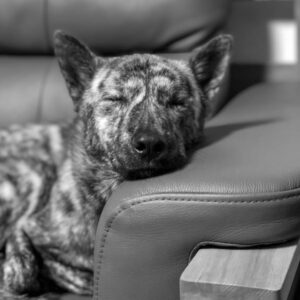 Living in an apartment doesn’t mean you have to compromise on owning a dog. Jindos, a remarkable breed, adapt surprisingly well to apartment living. Their patient nature and ability to adjust to confined spaces make them ideal companions for apartment dwellers. However, it’s important to note that Jindos still require sufficient exercise, even in an…
Living in an apartment doesn’t mean you have to compromise on owning a dog. Jindos, a remarkable breed, adapt surprisingly well to apartment living. Their patient nature and ability to adjust to confined spaces make them ideal companions for apartment dwellers. However, it’s important to note that Jindos still require sufficient exercise, even in an… - Badugi, the forgotten small dog of South Korea
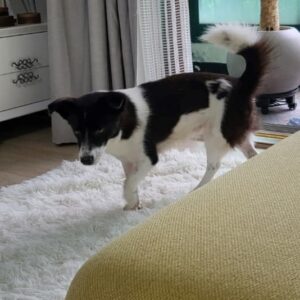 Badugi are small to medium size long hair dogs native to the Korean Peninsula. The name Badugi comes from the Chinese board game of the same name. In English, we know it as Go. Badugi basically translates to black and white, which matches the coat pattern of these small dogs. While larger breeds such as…
Badugi are small to medium size long hair dogs native to the Korean Peninsula. The name Badugi comes from the Chinese board game of the same name. In English, we know it as Go. Badugi basically translates to black and white, which matches the coat pattern of these small dogs. While larger breeds such as… - Jindo mix breeds
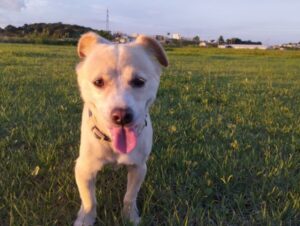 Most foster Jindo’s from South Korea will be a Jindo mix. or simply a Korean Village dog. Sometimes they are called Nureongi. Korean Village Dogs, specifically Jindos, have a rich history and are deeply rooted in South Korea. Jindos are known for their loyalty, cleanliness, and obedience when properly trained. However, due to their historical…
Most foster Jindo’s from South Korea will be a Jindo mix. or simply a Korean Village dog. Sometimes they are called Nureongi. Korean Village Dogs, specifically Jindos, have a rich history and are deeply rooted in South Korea. Jindos are known for their loyalty, cleanliness, and obedience when properly trained. However, due to their historical… - What to feed my Jindo?
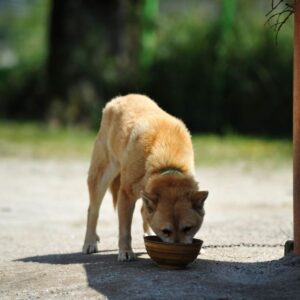 In traditional Korea, Jindos hunted and scavenged for most of their food. They were only given a subsistence diet by their owners. Jindos thrive on a varied diet similar to that of a wild landrace dog. Such a diet will keep them healthy for many years. Most owners in Korea feed their Jindos a combination…
In traditional Korea, Jindos hunted and scavenged for most of their food. They were only given a subsistence diet by their owners. Jindos thrive on a varied diet similar to that of a wild landrace dog. Such a diet will keep them healthy for many years. Most owners in Korea feed their Jindos a combination… - Are Jindos good off leash?
 Strong hunting instinct Jindos are difficult to trust off leash due to their strong hunting instinct and natural desire to roam. They have a strong desire to chase after any little animal which might provide an easy meal. I once watched a stray jindo chase down and nearly swallow whole a fledgling pheasant. This hunting…
Strong hunting instinct Jindos are difficult to trust off leash due to their strong hunting instinct and natural desire to roam. They have a strong desire to chase after any little animal which might provide an easy meal. I once watched a stray jindo chase down and nearly swallow whole a fledgling pheasant. This hunting… - How far and long to walk a jindo?
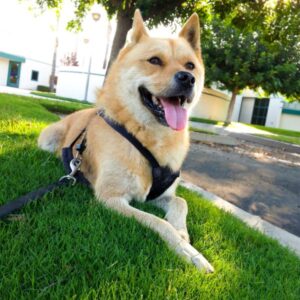 Jindos love to walk and are always ready for an adventure. Jindos are strong, fit dogs and for mental and physical wellbeing they require daily exercise. A minimum of two 30 minute walks per day is recommended. That is about 3 1/2 miles or just under 6 kilometres daily. These distances should be cut back…
Jindos love to walk and are always ready for an adventure. Jindos are strong, fit dogs and for mental and physical wellbeing they require daily exercise. A minimum of two 30 minute walks per day is recommended. That is about 3 1/2 miles or just under 6 kilometres daily. These distances should be cut back… - How big do Jindo dogs grow?
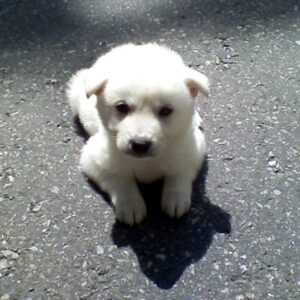 Jindos are medium size dogs but there is a lot of variation within the breed. With some being much taller than others. Male Jindo’s typically stand between 50-55cm tall, and weighs between 18-23kg. Females are slightly shorter at around 45-50cm tall, and weigh between 15-19kg, Due to their thick double coats and bushy tails, jindos…
Jindos are medium size dogs but there is a lot of variation within the breed. With some being much taller than others. Male Jindo’s typically stand between 50-55cm tall, and weighs between 18-23kg. Females are slightly shorter at around 45-50cm tall, and weigh between 15-19kg, Due to their thick double coats and bushy tails, jindos… - What is the life expectancy of a jindo
 Jindo’s Life Expectancy and Comparison to Other Dog Breeds When it comes to the life expectancy of Jindos, they are known to be a healthy and long-lived breed. Generally speaking, Jindos can live between 12 to 14 years, and there have even been cases where they reached the impressive age of 18. This is quite…
Jindo’s Life Expectancy and Comparison to Other Dog Breeds When it comes to the life expectancy of Jindos, they are known to be a healthy and long-lived breed. Generally speaking, Jindos can live between 12 to 14 years, and there have even been cases where they reached the impressive age of 18. This is quite…